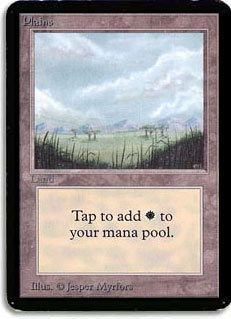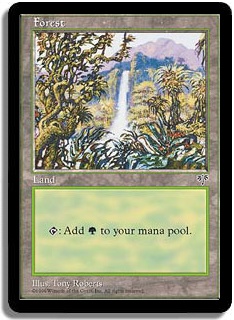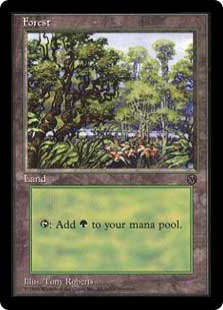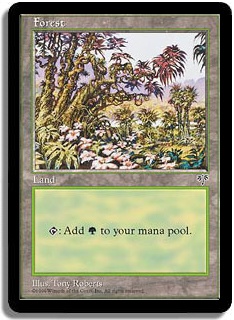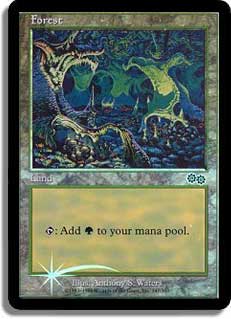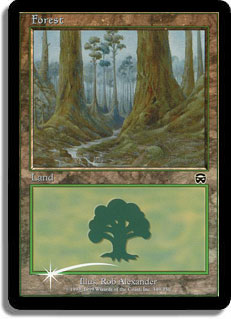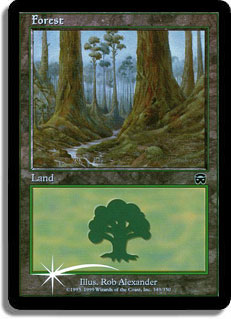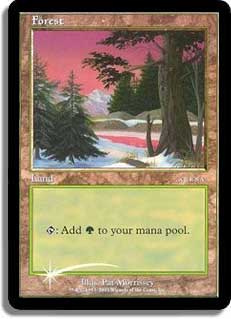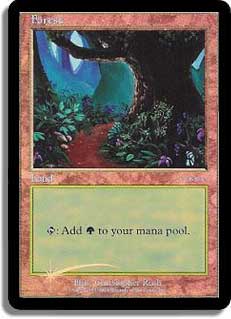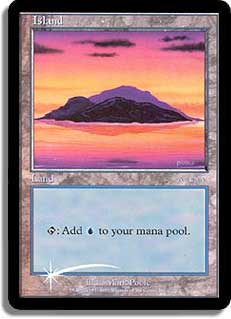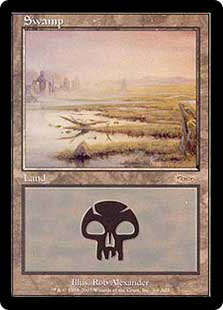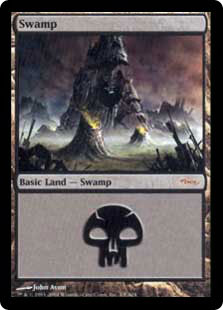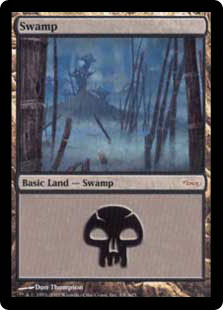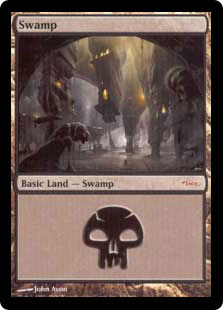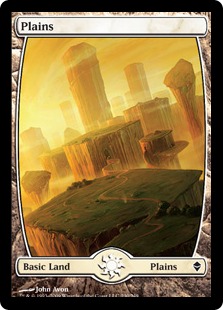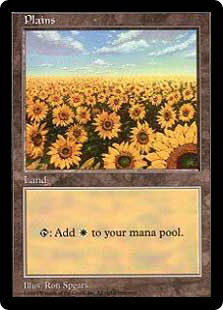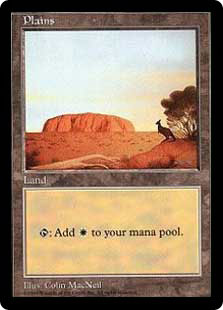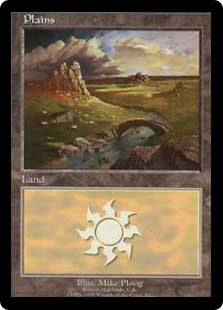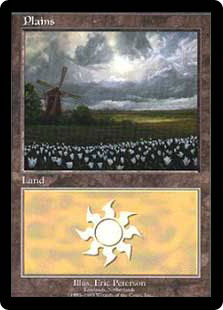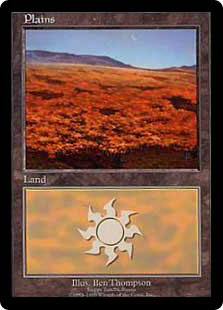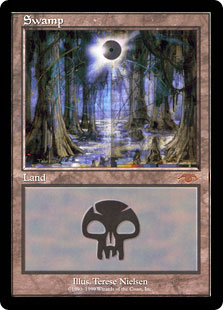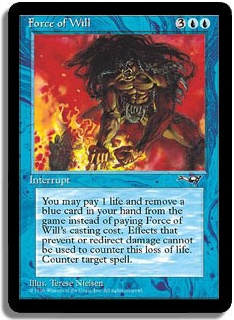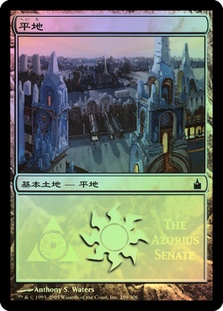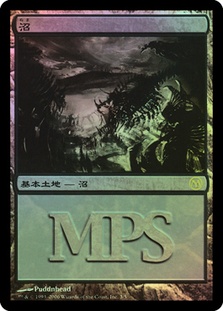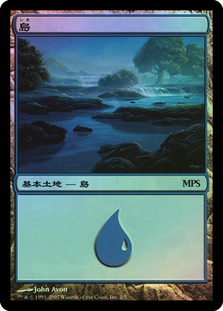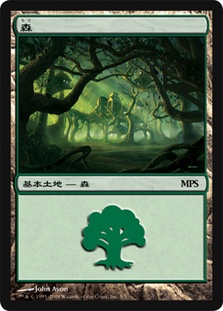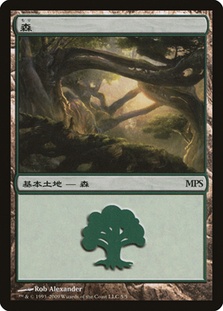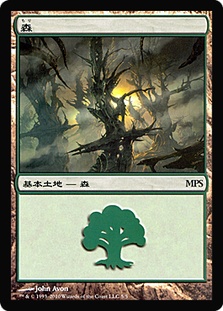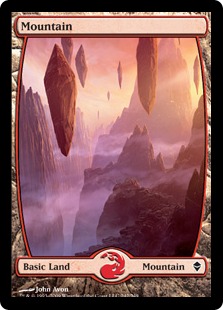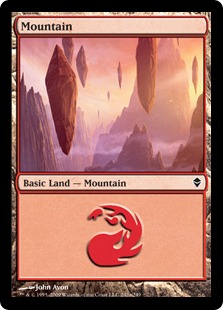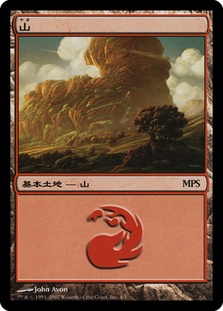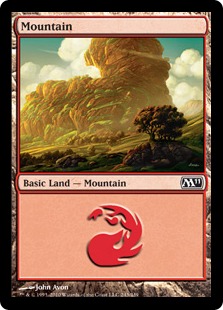The basic lands are the fundamental building blocks of Magic: The Gathering, so elementary that they are easy to overlook. Thanks to their longevity and the need to reprint them in every block and core set, the basic lands are also the most-illustrated cards of Magic and have been imagined and re-imagined by dozens of artists over nearly two decades. The many printings of basic lands also make them a great way to express players’ personal aesthetics, if they are so inclined (as most of the participants in this forum thread are). No single article can cover every interesting nuance of basic lands, but most of the highlights are here.
Basic lands have been part of Magic since the very beginning. That’s a very good place to start, yes?*
Alpha, Beta, and…Gamma?
One of my favorite Richard Garfield essays (yes, I have several) is “The Creation of Magic: The Gathering.” Written shortly after the game’s initial publication (and subsequent soaring popularity), it discusses the roots of Magic in terms of earlier games Dr. Garfield admired, as ancient as marbles and as recent as Strat-O-Matic baseball and Cosmic Encounter. Those influences coalesced into an early 1980s prototype game, “Five Magics,” that established the fantasy theme and card-game nature of what would become Magic: The Gathering. (The “trading card game” aspect came later.)
While the colors of Magic were settled early on, the basic lands associated with them might not have been. Keith Adams, “TheMisprintGuy” on YouTube and “fvzappa” on MagicLibrarities, owns an Alpha playtest Plains that produces red mana, not white! (Here, “Alpha” refers to the stage of playtesting, not the original publication of the game now referred to “Limited Edition Alpha.”) Mr. Adams was kind enough to send me a scan of the “red-producing playtest Plains” alongside a white-producing version (see below). Of course, by the time Magic went to press, all Plains produced white mana, and barring Reality Twist or similar shenanigans, red-producing Plains are off the table.
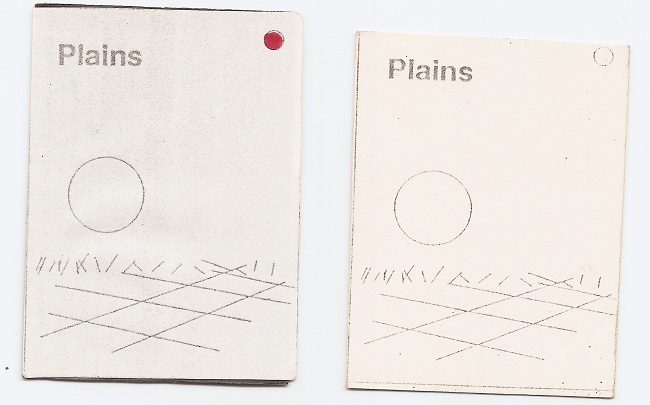
Image courtesy Keith Adams.
The Lonely Mountain: Arabian Nights
Trivia time! If you follow the StarCityGames.com Open Series, this will be easy for you. Who is this player?
Answer: “That’s a card, not a player!” receives partial credit, but the correct response is Patrick Sullivan, burn-player extraordinaire. His choice of basic land, the Arabian Nights Mountain, is as much of a stylistic signature as his preferred deck.
The best part? The Arabian Nights Mountain shouldn’t exist.
Originally, all five basic lands were set to go into Arabian Nights (see entry #13 in Mark Rosewater “25 Random Things About Magic”). After that decision was reversed, the basic lands (presumably all with Alpha art) were removed from the documents sent to the printer—except for one Mountain that the proofers missed. The solitary Mountain was printed in Arabian Nights as a common card, making the Mountain the most printed of the five basic lands.
Also mentioned in the Rosewater article is the “rare Island” of Alpha,** printed alongside cards such as Balance and occupying the same Uncommon-1 rarity slot. That makes the Island the second most-printed basic land, with the rest tied for third.
Sprechen Sie Deutsch? A Pair of Errors
Basic land art featured in a pair of errors on early German printings of Magic. The so-called “Drudge Swamp” shows Swamp artwork instead of the Drudge Skeletons depicted on regular versions of the card, while a Forest inadvertently used an image of a Plains instead. The wrong-‘un Wald (or Forest) saw a degree of tournament use until the DCI ruled that playing the land for its tricky properties was deceptive and thus out-of-bounds. For more information on these errors, see entries 4 and 5 in this Ben Bleiweiss article.
Enter the Arena
The first promotional basic lands were printed for Arena, an introduction-to-Magic program that started in 1996 and lasted until the debut of Time Spiral block in 2007. These initial promos had a simple logo, a black Magic “M” within a circle, and featured a cycle of five illustrations by British illustrator Tony Roberts. The Forest bears a strong similarity to the Mirage mural he created to illustrate that block’s four Forests, but however much the trees may look alike, the Arena art is not a match for any of them. The Roberts Arena lands, too, form a mural.
Close, but not quite.
Several years later, Urza’s Saga lands were given the foil treatment and pressed into service as Arena promos, starting a new line. The Urza’s Saga Arena foils were distributed in 1999 and at the beginning of 2000. When Mercadian Masques came out, new Arena foils featuring Masques artwork debuted; these are subtly different from the booster-pack foil Masques basic lands, in that the “shooting star” at the bottom is smaller on the Arena foils. (Why smaller? I have no idea.)
Â
Urza’s Saga and Mercadian Masques Arena foils, with a regular Mercadian Masques foil for comparison. Note the smaller star with tail ending higher on the Arena foil.
In 2001, the Arena foils went old-school, showcasing Ice Age art (which presumably cost Wizards of the Coast in paid-out royalties). December 2001 and February 2002 turned back the clock even more with foil renditions of a Beta Forest and Island, but this cycle was not completed for distribution.
Ice Age and Beta art, now with shiny goodness.
Starting in 2003 and continuing through the 2006 edition of Arena, new non-foil basic lands were given out featuring artwork depicting the setting of the current block but not seen elsewhere. Otaria in Dominaria was the subject of 2003 for Onslaught block, and the eponymous settings of Mirrodin, Kamigawa, and Ravnica took their turns in subsequent years. Noted Magic land artists Rob Alexander (Onslaught, a magnificent mural) and John Avon illustrated the complete sets for all years but 2005—when Don Thompson created five basic lands for Magic, the Kamigawa Arena lands, and never was heard from again. Only one other artist shares that Magic career quirk: Craig Mullins, who did a cycle for Time Spiral block.
Arena Swamps: 2003, 2004, 2005, 2006.
Unglued and Its Full-Art Successors
As a player, I have mixed feelings about Unglued and Unhinged, the “joke sets” of Magic. With their tiny built-in audience (established Magic players, English only because of translation difficulties) and the hit-and-miss nature of the humor, Unglued and Unhinged would not go beyond “cult hit” status, if that. Ten cards within the set, however, redeem it in my eyes: the full-art basic lands. The only black-bordered (and thus tournament-playable) cards in each set, the basic lands with their distinctive layouts were instant hits; unlike the novelty of mechanics such as six-sided dice and “Gotcha!”, the quirky lands had their own broader purpose in Magic.
The original Unglued lands debuted in 1998, and the Unhinged lands (with foil versions) bowed in 2004. Zendikar, noted as a “land-themed” set in too many Mark Rosewater articles to count, re-used the full-art basic land concept, winning over the “Acquisition-era” generation of fans who came to the game after Time Spiral block. The full-art basic lands are used only sparingly, but perhaps in a few years, their time will come again.
APAC Lands and Euro Lands
Both the Asia-Pacific (APAC) lands, released in 1998, and the Euro lands, keyed to booster-box purchases of sets released in 2000, were issued as five-card “packs” in color-coded cellophane. APAC lands were wrapped in blue, red, or clear plastic, while the Euro lands swapped purple plastic for the clear.
With the recent emphasis on avoiding real-world references (see: Runeclaw Bears and Day of Judgment for Grizzly Bears and Wrath of God), these land sets, released a couple of years apart but undeniably linked, never would fly today. I find it a shame, because the APAC (Asia-Pacific) and Euro lands, created for those Magic markets, are among the most visually arresting basic lands created. Instead of illustrating the wonders of never-existing worlds, they depict the beauty of our own. The APAC Plains cards, for example, depict Uluru in Australia, the Great Wall of China (one of two basic lands illustrated by Rebecca Guay), and sunflowers for Japan. I didn’t get the Japan connection on seeing the art, but sunflowers do grow well in Japan, and recent news stories in the Western media suggest that sunflowers are being used to decontaminate radioactive ground, which gives the art an entirely different resonance.
APAC Plains: red/Japan, blue/Australia, clear/China.
An important distinction between the Asia-Pacific and Euro land sets is that the Euro lands list the specific locales they depict. The most popular Euro land booster, red, has a plains depicting the Netherlands Lowlands (complete with windmill!) and the most expensive Euro land, the island depicting Venezia (or in English, Venice).
Euro lands: blue/Scottish Highlands, purple/Netherlands Lowlands, red/Russian steppe
GURU Lands
Not counting misprints, pre-publication playtest cards, and similar oddities, the most expensive basic lands are the GURU lands, rewards for a teaching-and-referral program that lasted about nineteen months between 1999 and 2001. Not many of these lands were distributed, but with their gorgeous Terese Nielsen art featuring a stunning “eclipse” theme (the gold leaf on the paintings echoing the gold mortarboard symbol on the cards), the GURU lands are immensely popular, and the demand is far greater than the supply. StarCityGames.com has trouble keeping them in stock; in fact, as of this writing, there is only one GURU land in the store, a Slightly Played Swamp, at $64.99. Even in a vacuum, that’s a staggering price for a basic land, but here’s what really drives home the cost: the same amount of money could get you a Slightly Played Force of Will!
Pick one.
Selecting Eighth Edition (and Tenth)
“Players-make-the-call” Core Set experiments were run on the official Magic: the Gathering Web site for Eighth, Ninth, and Tenth Editions. The first and last of these included voting on the art for basic lands, and when the voting was done, the message was clear. We love John Avon.
He accounts for one Swamp out of four (plus a close fifth-place finish), two Plains and two Islands (again, with a close fifth-place finish), three of the Mountains, and all four of the Forests (plus the fifth and sixth slots for good measure). Fully 60% of Eighth Edition basic land is illustrated by Avon—an undeniable expression of the voters’ will, though imbalanced.
For Tenth Edition, the voting was different. Players first voted for four previous blocks to be represented in Magic art; Urza’s Saga, Invasion, Kamigawa, and Ravnica won. Then votes were held between the four illustrations for each basic land in each block to find a winner. John Avon still ran away with the voting, taking down six slots of twenty compared to three for runner-up (and Ravnica heavy-hitter) Stephan Martiniere.
John Avon is a staple of basic land art, contributing sets-of-five to Time Spiral and Zendikar, both released after the voting for Tenth Edition concluded. In-between, however, his sets of five basic lands were diverted to another, more promotional purpose. Few Westerners knew about it at first, but it turned out that Avon was…
Big in Japan: Magic Premier Shop Promos
A Magic Arcana from January 2009 tipped off everyone who didn’t know: the Magic Premier Shops program had been distributing alternate-art basic lands to high-priority retailers of Magic in Japan. The program had its start with a series of foil basic lands built around the various guilds of Ravnica, complete with guild symbols and semi-gratuitous English text. After that came a serious of five foil alternate-art basic lands themed around Time Spiral, all with giant letters “MPS” standing alone in the text box. (This cycle is notable, at least for me, for making me care about a piece of Puddnhead art, the Swamp.) With Lorwyn came foil and non-foil versions of the same alternate-art basic lands, this time with all art by a single artist: John Avon.
Azorius Plains (2005), MPS Time Spiral Swamp (2006), MPS Lorwyn Island (2007).
The single-artist, foil-and-nonfoil pattern continued for 2008, 2009, and 2010, with John Avon, Rob Alexander, and Avon again tackling Alara, Zendikar, and Scars of Mirrodin themes. I haven’t heard whether Innistrad MPS lands exist.
Alara MPS Forest (2008), Zendikar MPS Forest (2009), Scars of Mirrodin MPS Forest (2010).
Notably, the Zendikar MPS Forests are not full-art, making them resemble the regular-art Zendikar lands found in Intro Packs and beloved by Magic hipsters. Also worth noting: the awesomeness of Avon’s alternate-art Lorwyn basic lands was too good not to share with the rest of the world, and so the five pieces of promotional art made the jump to regular printing with their inclusion in Magic 2011. I can’t think of another such occurrence. If you can come up with others, let me know in the Facebook comments below.
John Avon Zendikar Mountain full art, the same Zendikar Mountain as regular/”hipster” art.
MPS 2007 Mountain, Magic 2011 Mountain.
**
I hope you’ve enjoyed this look at the basic lands of Magic in all their complicated glory. The next time you’re getting lands for a Sealed Deck or Draft event, take a moment to look at the pictures in your hands, and let yourself be surprised.
As always, thanks for reading.
— JDB
@jdbeety on Twitter
* That’s my musical theater quota for the week.
**You expected a Lonely Island reference here, didn’t you? Fine. You’re on a boat.

